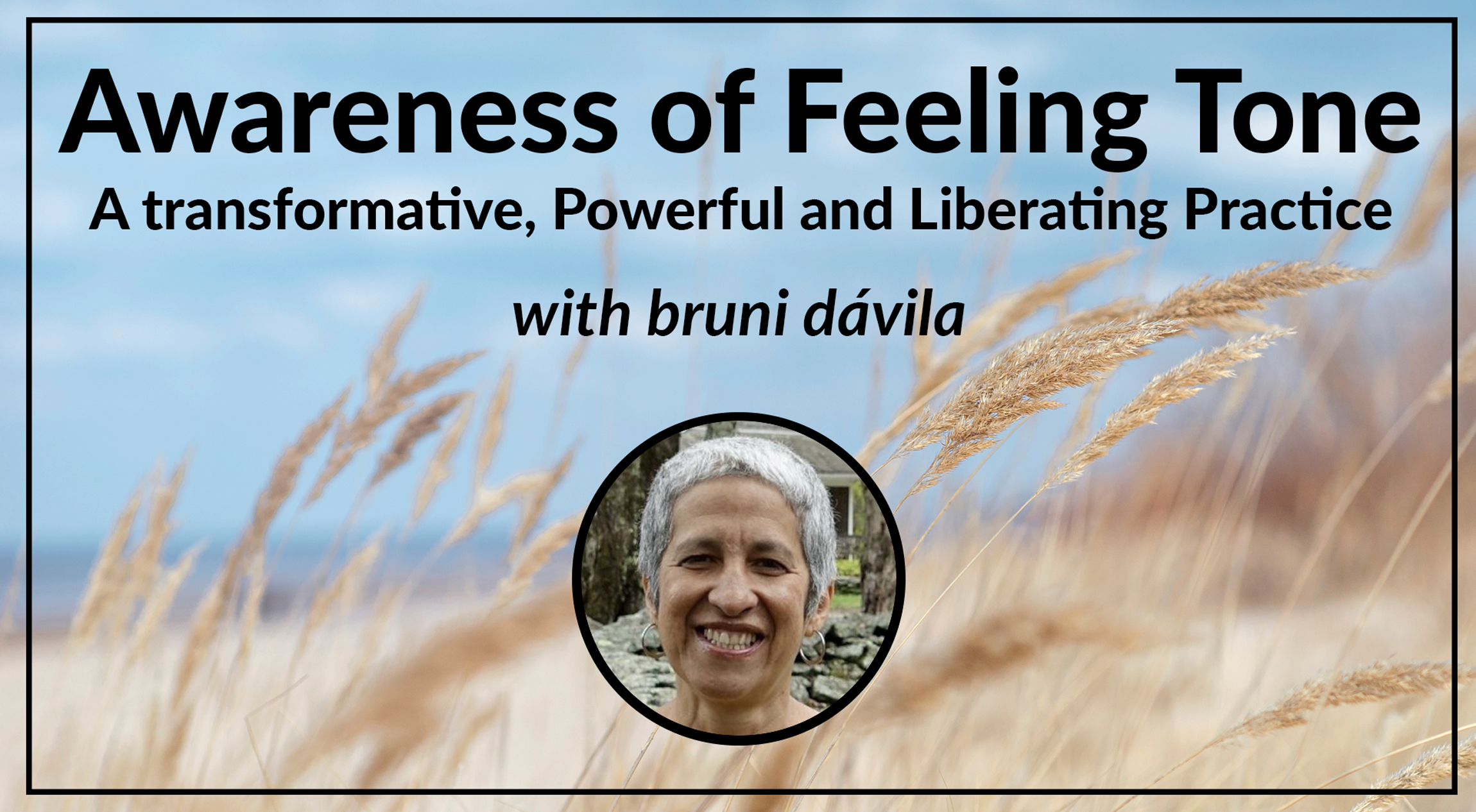Awareness of Feeling Tone: A Transformative, Powerful, and Liberating Practice
Friday, June 16 – Sunday, June 18, 2023
Register for this retreat.
bruni dávila has practiced Vipassana and Zen since 1995. A student of Andrea Fella and Gil Fronsdal, she practices and teaches at the Insight Meditation Center in Redwood City, CA, and also teaches Dharma in Spanish in the wider Bay Area. She completed the four-year IMS Teacher Training Program in 2021.
bruni dávila, originaria de Puerto Rico, emigró a los Estados Unidos continental en 1991. Ella ha practicado la meditación introspectiva/insight en las tradiciones Vipassana y Zen desde 1995. bruni es estudiante de Gil Fronsdal y Andrea Fella en Insight Meditation Center en Redwood City, CA, donde practica y enseña. En 2021, bruni completó el Programa de entrenamiento para Maestros del Insight Meditation Society.
Here, bruni speaks with IMS Staff Writer Raquel Baetz about her upcoming online program, Awareness of Feeling Tone.
Why did you choose to explore the second foundation of mindfulness—feeling tone—for this online weekend retreat?
Because practicing with feeling tone has been transformative, powerful, and liberating for me, and I wanted to share these fruits of the practice with the sangha. In experiencing vedanā and understanding what it is in Buddhist practice, I have seen how decisions made in this life have led to freedom or to extra suffering.
When noticed, feeling tone is like a yellow traffic light signaling: “Notice feeling tone, pause, and proceed with care.” How is vedanā conditioning the mind? Is it time to check the attitude and quality of attention with which we are practicing? How are we relating to the experience? Are we moving towards craving and clinging or towards actions of the body, speech, and mind that are supported by the wisdom of seeing things as they really are?
Give us a brief introduction to mindfulness of feeling tone.
In Buddhism, vedanā refers to the feeling tone of experience. It is the mental quality that arises as being pleasant, unpleasant, or neither (sometimes called neutral) at any moment of sensory contact with the sense door consciousness.
The word “tone” is very important, because it helps us remember that feeling tone does not refer to emotions or physical sensations, nor does it translate into English as “I feel happy” or “I am feeling warm.” Feeling tone refers to pleasant, unpleasant, or neither. Pleasant does not necessarily mean “this is good” and unpleasant does not necessarily mean “this is bad.”
We may be able to experience feeling tone at any of the six sense doors. For example, we hear a sound—hearing is happening and it may be pleasant. Or something is seen and an unpleasant feeling tone may arise. We sense/feel an emotion or physical sensation and a neutral feeling tone may arise with it. We notice thinking, and with the experience of thinking, a pleasant feeling tone may arise, and so on.
Feeling tone is conditioned and arises and passes quickly. It does change! Remembering to check what the feeling tone is of the experience you are exploring is then key.
If we are not aware, feeling tone can feed mental reactive patterns of greed, aversion, and delusion, and create suffering. If we are aware and learn through direct experience what is happening and how feeling tone changes, we can practice with wise view and an attitude that supports ease. We can choose wisely how to relate to the experience.
How do we meet what comes up for us?
Meeting whatever comes up with kindness and respect can be a supportive and right attitude. In receiving and knowing what shows up—without being against or in favor, just noticing what it is—could be meeting experience with wise view.
There is also the pragmatic and practical aspect of the practice—attending to what needs to be attended to. Taking care of yourself, letting go of fixed ideas or “shoulds” if possible, can support us in the practice.
What can participants look forward to with this program and who is it appropriate for?
Participants can expect an unhurried and spacious offering for practicing with the Satipatthanas, mainly with feeling tone. Simple and accessible instructions will be given during guided meditation. There will also be extended periods of silence with no guidance or instruction. The retreat is appropriate for experienced practitioners or for practitioners who are comfortable with minimal guidance.



